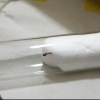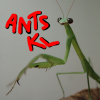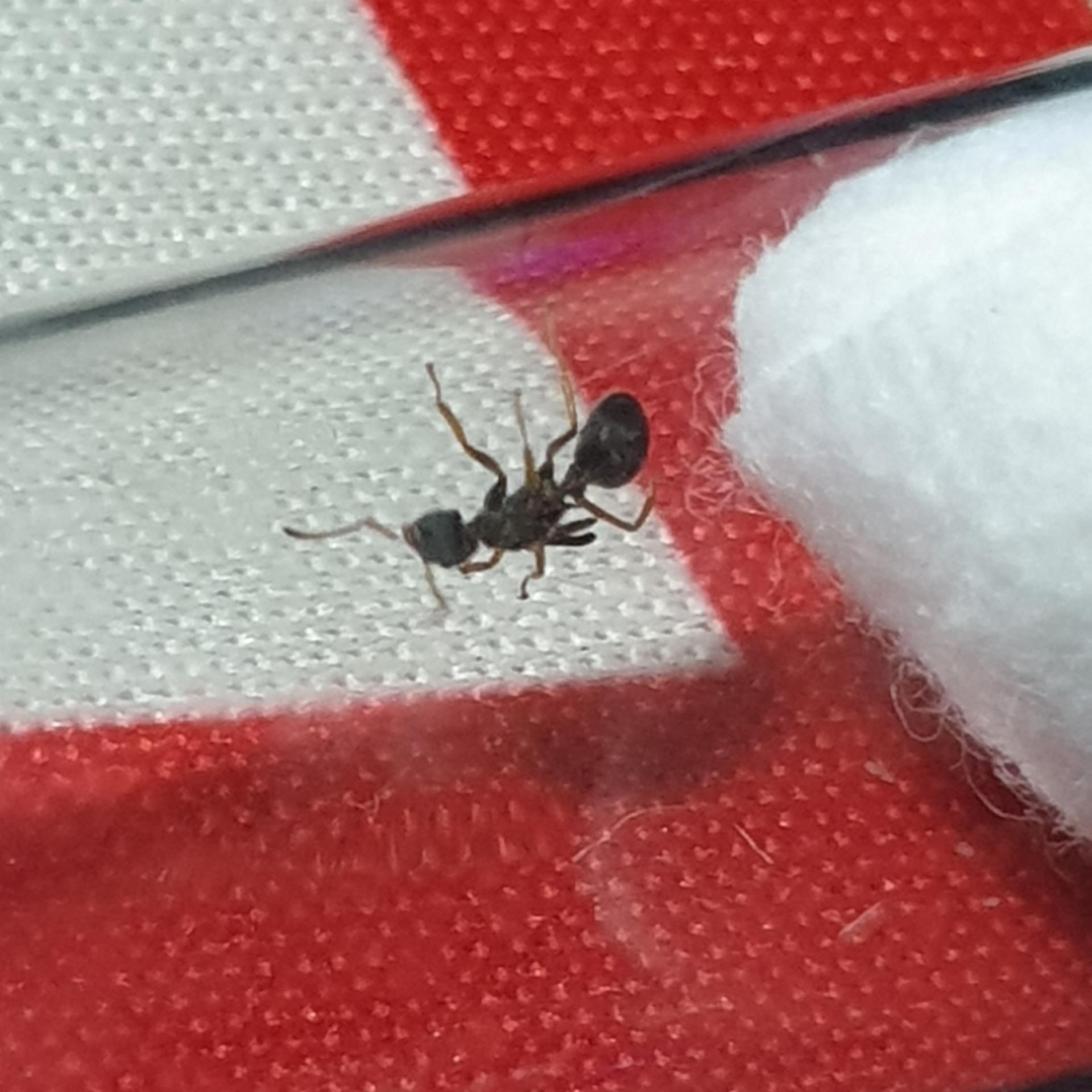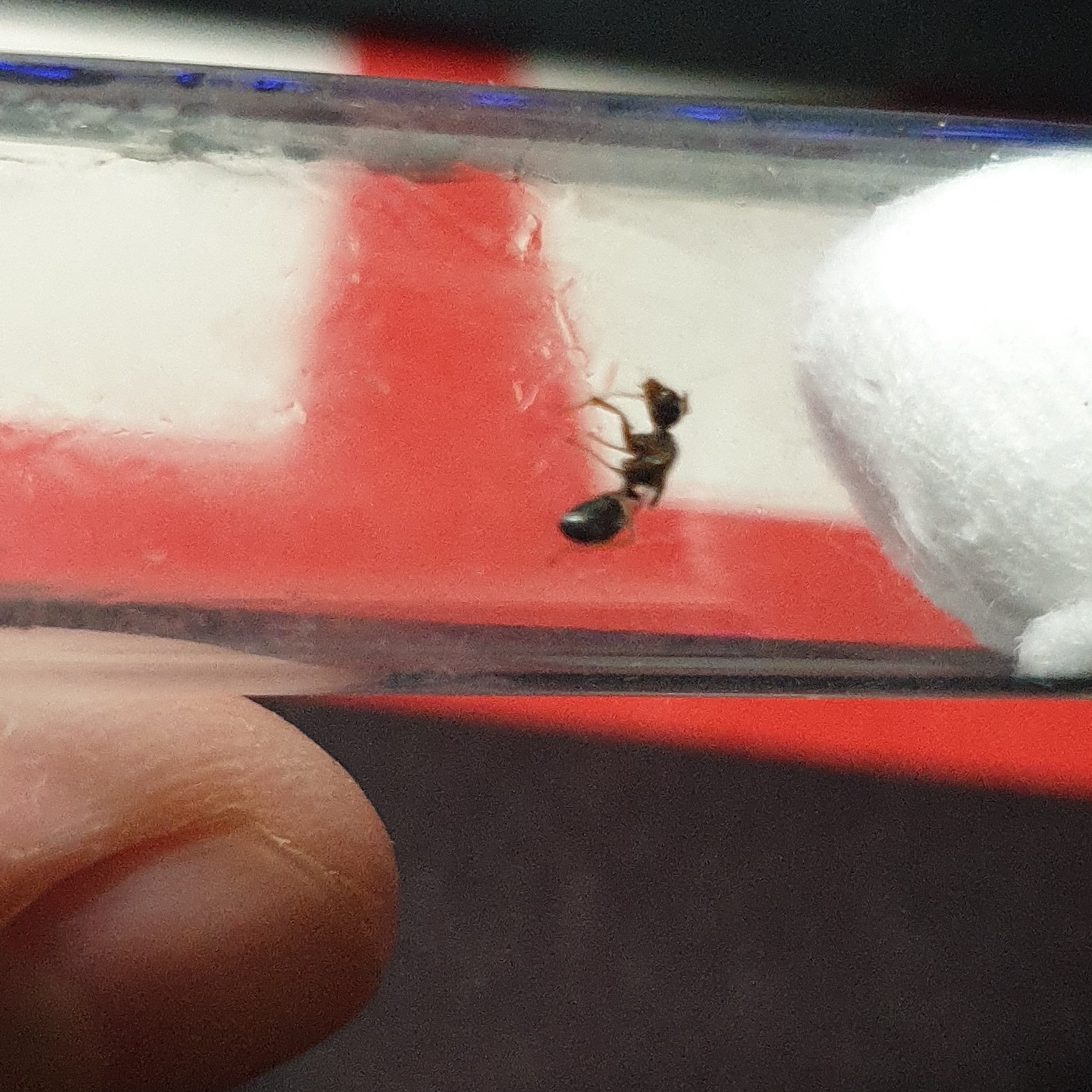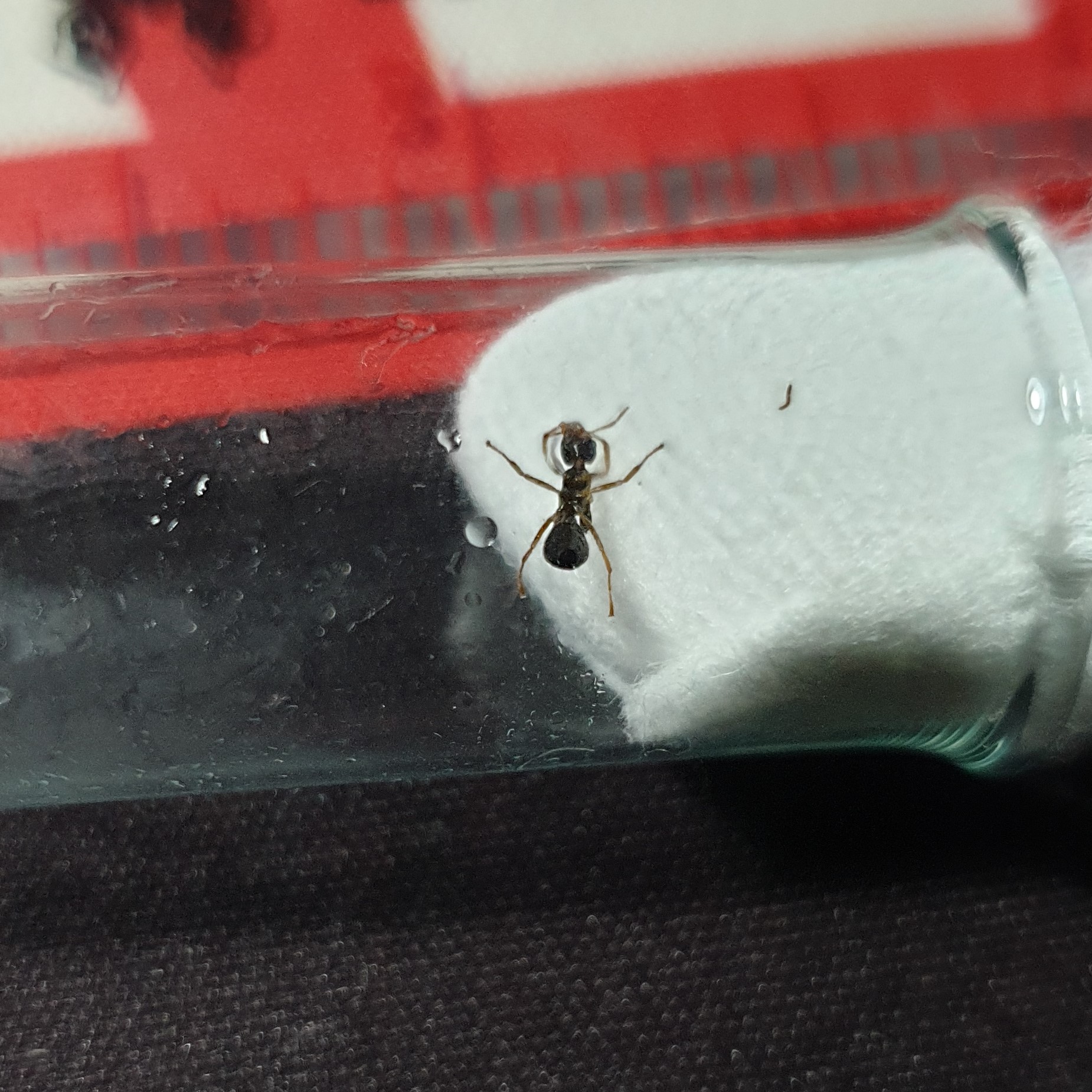1. Indonesia, Central Java, Semarang, In my backyard.
2. 03/07/2021 20:00 WIB, 7+UTC
3. in my backyard under a ceramic.
4. 4-5mm
5. black head & thorax & abdomen
6. long antenna
7. abdomen is bigger than other worker
8. in my poarch.
9. i don't know.
i actually don't know if this is a queen ant or not.


